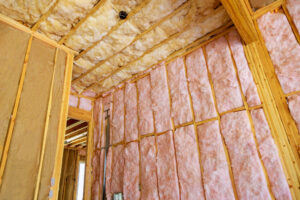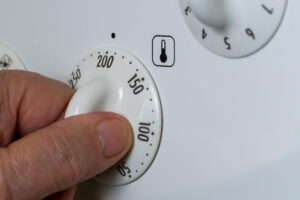How to make your home comfortable
Last updated on March 10th, 2024 at 03:15 pm
There is this almost fanatical belief amongst homeowners that their home must be energy efficient so they can reduce their energy bills. Unfortunately,this is the wrong approach to take. You improve your home, you increase energy efficiency so that you can live comfortably. Then the energy saving comes naturally afterwards. Think of it as comfortable living = energy saving.
The two paths two sometimes cross. For example, in the winter or colder months, if the weather is particularly cold outside one day, you may not be comfortable in your house with the temperature set at 68 degrees F. But to save energy, you keep the thermostat at that temperature. So what do you do? Live comfortably and turn up the temperature at the expense of your energy bill, or keep the thermostat where it is and be miserable and achy?
Summer may prove a similar dilemma. It is a very hot and humid day. You want to turn the temperature down on the A/C thermostat but refrain from doing so because you know it will take a toll on your energy bill. You sweat, swear, and curse the area you live in for being so dang warm.
You obviously aren’t comfortable – yet you have an undying belief to save energy.
Of course, if the flip side was true, if you did decide to adjust the thermostat and saw “screw it” to the energy saving, you’re comfortable – but paying more for energy because you’re using more.
The problem is if you find yourself in such a situation, there is always and underlying factor that is directly affecting your comfort and happiness and energy usage. In both cases, I can easily point my finger at insulation, for example, as an underlying cause to your energy saving woes. Fixing or upgrading your insulation might very well fix the problem or extreme temperature in your home. Of course, there could be a whole host of other problems too – inefficient unit, faulty installations, bad energy habits, bad windows or doors, energy leaks, etc. But most commonly, insulation is the #1 cause of the scenarios above.
So, what now? How do you marry comfort and energy saving practices?
The answer, of course, is to make sure that your habits as they pertain to energy usage remain good, and your home is energy efficient. It isn’t necessary to go overboard if you’re comfortable in your home, and your energy bills remain low.
Let’s say you are on a fixed income, and based on your current energy usage you expect to pay a certain amount for your energy per month. If you live comfortably AND consistently afford your energy bill – there is no problem. You can undertake small energy repairs here and there to make your energy bill lower. But that’s not really going to make you more comfortable.
My point is to always shoot for comfort over strict energy saving to save your sanity. If you find the road to comfort ever comes at the expense of your energy bill, then you know there is something going on (like insulation) that needs to be fixed. Living comfortably should never interfere with energy saving.
So, how do I make my home more comfortable?
Well, the first thing as mentioned above is to check your insulation. As many as 1 in every 3 homes in the USA may be underinsulated in at least one area. And that number actually increases with the age of your home. Older homes have lower grade insulation either because the material is degraded or not as efficient as today’s insulation, or because the building standards have changed. For example, homes built in the 1970’s have lower R-value insulation than modern homes because homes built during this time (depending on your locality) didn’t require the same R-value as today. To throw a number out there, most areas of the USA require an R-value of 19 (R-19) in outer facing walls. In the 1970’s this may have been R-15 or lower. As insulation changes, standards and technology eveolves and even as the climate shifts, building codes will shift as well. So what was modern or current 30 years ago is old history today, and inefficient.
The most common places to be underinsulated is the attic, unheated basement ceilings, and outer facing walls in older homes. By far, the first two are much more common. Consider that in most homes, the last stop or barrier preventing warmed air from the outdoors is the attic. It makes sense to have a higher grade insulation to keep as much heat as possible in the home. It also makes sense (if you stop and think about it) to povide a way to ventilate the attic, so heat doesn’t build up and damage the roof. A lot of roof damage is caused by inadequate insulation.
How? Well, if the attic is too warm, it creates ice jams which weakens the roof. The freezing/thawing/re-freezing of snow on your roof in the winter causes stress on the materials and causes leaks. So you can actually significantly reduce the life of your roof through inadequate insulation.
Next, adopt good energy practices. Yes, the simple things like turning off lights makes a difference. Using heavy load bearing appliances when needed. Choosing new appliances wisely and basing your decision on the energy star and energy guide stickers.
Also, seal air leaks. You can easily find air leaks by feeling for warm or cold air along baseboards, windows, doorways, outer walls, outlets, etc. If you find an air leak, assume that you are losing energy through the “hole”.
Replacing old windows and doors also helps. These are energy improvements that are cosmetic as well. You’ll probably feel better about your home and be more comfortable in your home than see the savings on your energy bill. But the older or worse the window unit is, chances are the bigger savings you’ll see on your energy bill as well.
If you can’t afford new windows, that’s not a problem. Go to your local home improvement store, and check out low emission window film. This is a radiant barrier film that you cut to size and fits over your window panes. This helps eliminate solar heating and radiation while marginally improving the efficiency and insulation of your window. However, this does not solve the window’s frame or air leak problems you might be experiencing. You’ll still need to caulk it up and seal it no matter what the season.
Window coverings also make a difference, again, probably more so in the overall comfort and ambiance of your home rather than the energy savings per se. Many rooms are finished with curtains, shutters or a combination. Drawing them or closing curtains or shutters in the day reduces solar heating (in the summer) while opening them increases the room temperature because the air is heated by solar radiation.
Making sure chimneys, flues, and other openings are closed when not in use is also best practice. Often these areas are forgotten – and a lot of energy can be lost through them.


